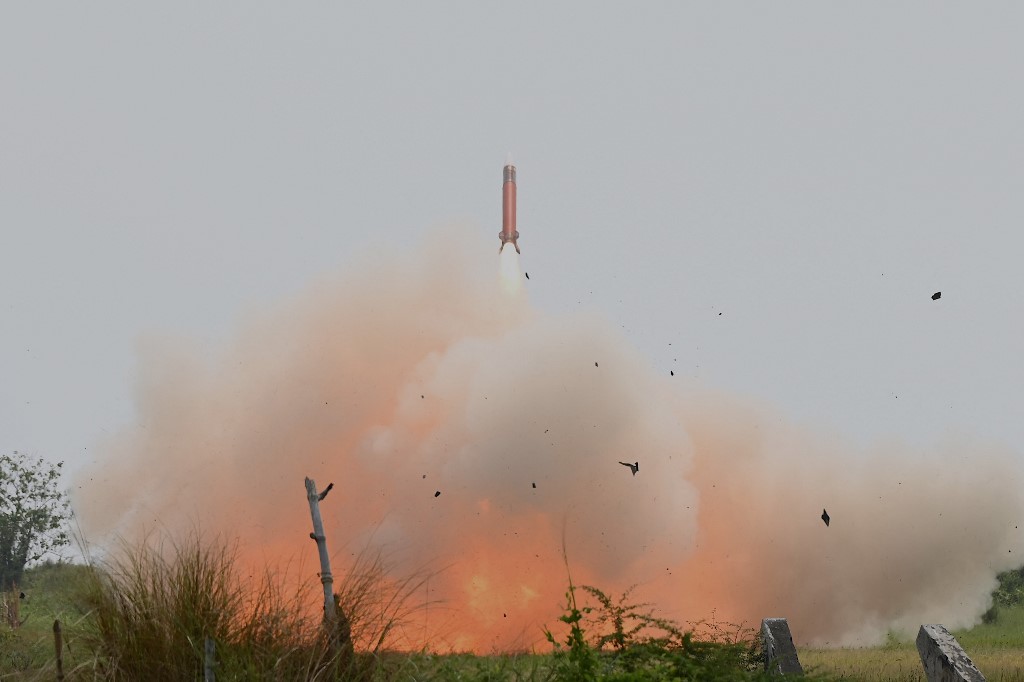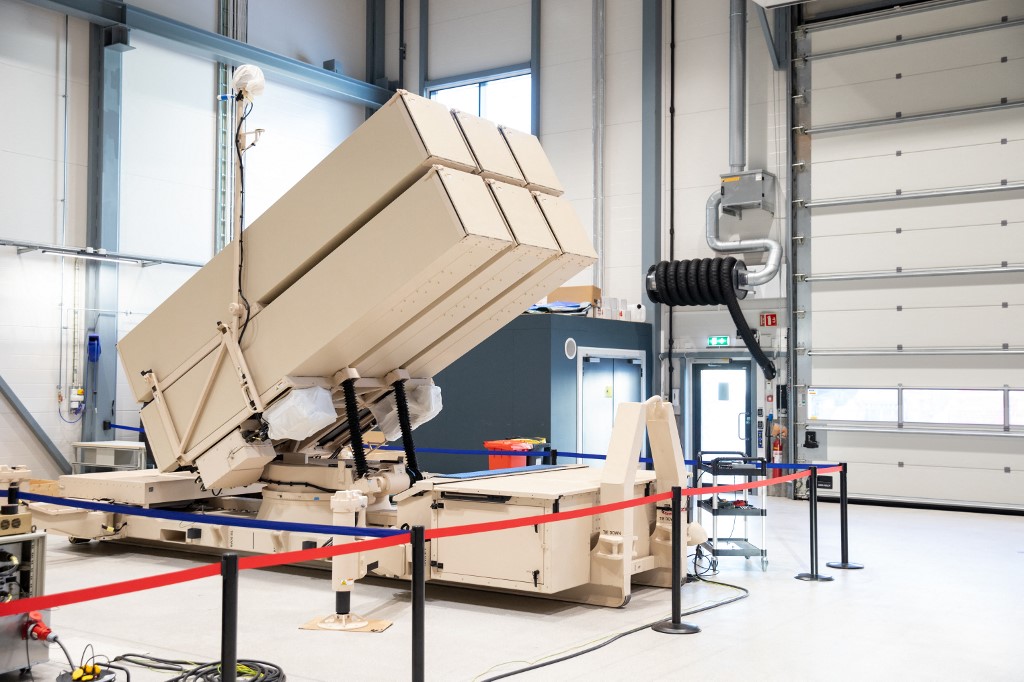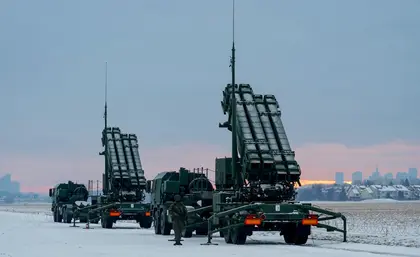As the clock continues to counts down to the anticipated Ukrainian major counteroffensive, most of the ground weapons promised to Kyiv by the West are in country, although a major part of the anti-aircraft systems needed to protect Ukraine’s troops from the Russia’s still-powerful air force, are still on their way.
Ukraine’s Defense Minister Oleksii Reznikov told reporters on April 20 that the upcoming assault, which will be the largest and most ambitious operation ever attempted by the Armed Forces of Ukraine (AFU), must have integrated modern air defenses to protect both its assault troops and the critical supply lines supporting them: “Our top priority is to build a multi-level air defense/anti-missile defense system.”
Multiple components of that layered network of radars, power vehicles, missile launchers and the personnel trained to operate them are yet to arrive in country, Ukraine Air Force spokesman Yuri Ignat said, putting its offensive in danger, particularly as the Ukrainian military has practically no fighters of its own. In a country the size of Ukraine, the only possible strategy, once the systems get into Ukrainian hands, is to concentrate air defenses where the threat of Russian air strikes is greatest, he said.
“These [western anti-aircraft] systems could be delivered to Ukraine in a short time. There have been reports that delivery would take two months … now we are waiting for it to happen,” Ignat said in an April 9 press statement.

EU Transfers €1.5 Bln Raised From Russian Assets for Ukraine
Reznikov, in late April, declared the AFU’s preparations for an offensive were “98 percent complete,” while on Sunday the German government confirmed that a second ‘IRIS-T’ anti-aircraft system, one of the weapons Ignat and the AFU have been waiting for, had been handed over to Ukraine and was awaiting transport into theater.
IRIS-T is a cutting-edge, medium range, vehicle-mounted anti-aircraft missile, developed in the 1990s by Germany, Italy and Sweden and others. IRIS-T covers a radius of 40 km. and up to 30 km. in altitude. It is highly mobile and effective against both fighters and bombers. Ukrainian air defense troops operating the first system, delivered in October, found IRIS-T to be deadly against Russian aircraft and cruise missiles alike, with, Ukrainian military sources currently claim, a 100 percent kill rate against drones.
A second IRIS-T system delivery is likely in May or June, because a second batch of Ukrainian soldiers began a two-month training cycle on the system in Germany, in March, according to Ukrainian news reports.
The most powerful anti-aircraft weapon known currently to be operated by the Ukrainians, the US ‘Patriot’ system, is likely still being integrated into Reznikov’s multi-layered network. Costing a billion dollars per four-launcher battery and firing missiles costing four million dollars a shot, Patriot is billed by its manufacturer Raytheon as able to close a 90-160 kilometer diameter hemisphere of air space to any aircraft flying more than 20 meters above the ground. Germany donated the first system, while two more Patriot systems, one from the US and one from the Netherlands, have been promised Ukraine. According to US news reports crew training takes about three months, two in the US and one in Germany.

The Patriot surface-to-air missile system fires during the US-Philippines Balikatan joint military exercise at San Antonio in Zambales, north of Manila on April 25. PHOTO: AFP
Ukrainian military planners are closely watching a similar crew work-up timeline for an arguably even more capable missile system produced by France and Italy, known as ‘SAMP/T.’ Similar in design but, more modern, than the Patriot. The most advanced models of SAMP/T have a reported effective range in excess of 120 km to an altitude of 25 km.
Crew training was in progress in Italy in March and, according to a March 28 French Defense Ministry statement to the Figaro newspaper, the first system would be handed over to Ukrainian forces “in a few days.” Italian media in mid-March reported Paris and Rome would also deliver 700 missiles for the Ukrainian systems. An April 9 Ukraine air force statement said the system would most likely reach the combat front in “a few months.” As of May 1, it was not clear whether or not the first SAMP/T had reached the field in Ukraine.
At the top end of the tech scale for that type of system, the Ukrainians are now operating two truck-mounted ‘NASAMS’ missile launchers, an American system designed to fire the tested and highly-effective AIM-120 air-to-air missile, the standard weapon used by US and Israeli fighter pilots, from a ground-based platform. Ukraine was operating two NASAMS launchers with great success from mid-April and four more systems were on-route, the US television company CBS reported.

A NASAMS surface-to-air missile launcher is seen during production at the assembly line of the Kongsberg Defence & Aerospace weapons factory in Kongsberg, Norway on January 30. PHOTO: AFP
Systems such as NASMS, Patriot and SAMP/T work best against medium and high-level targets. Were Russian combat pilots to attempt to avoid those systems radars and fly at very low altitude, they would risk being targeted by literally hundreds of hand-held anti-aircraft missiles sent to the Ukrainian infantry from the US, Poland and the Baltic states and the more than two dozen quick-firing Gephard anti-aircraft cannon armored vehicles sent by Germany. Heavier shorter-range western anti-aircraft missile systems, which are better-suited to dealing with fast-flying, low-level aircraft large numbers of which are also in the logistics pipeline for delivery to Ukraine.
On the bargain basement side, over a year of war the Ukrainian military has become probably the world’s biggest receptacle of older NATO weapons, including anti-aircraft missiles. In November Spain handed over to Ukraine a reported four Aspide 2000 missile launchers, a Cold War-era system firing, like the modern NASAMS, a ground-launched version of an air-to-air missile called the Sparrow, which had been considered as cutting-edge military technology in the 1970s. The Ukrainians found Aspide still generally capable of closing down airspace in a 15 km. circle. The Pentagon in November announced they would send reload missiles which, due to their age, needed to be refurbished before being put in action in Ukraine.
You can also highlight the text and press Ctrl + Enter






